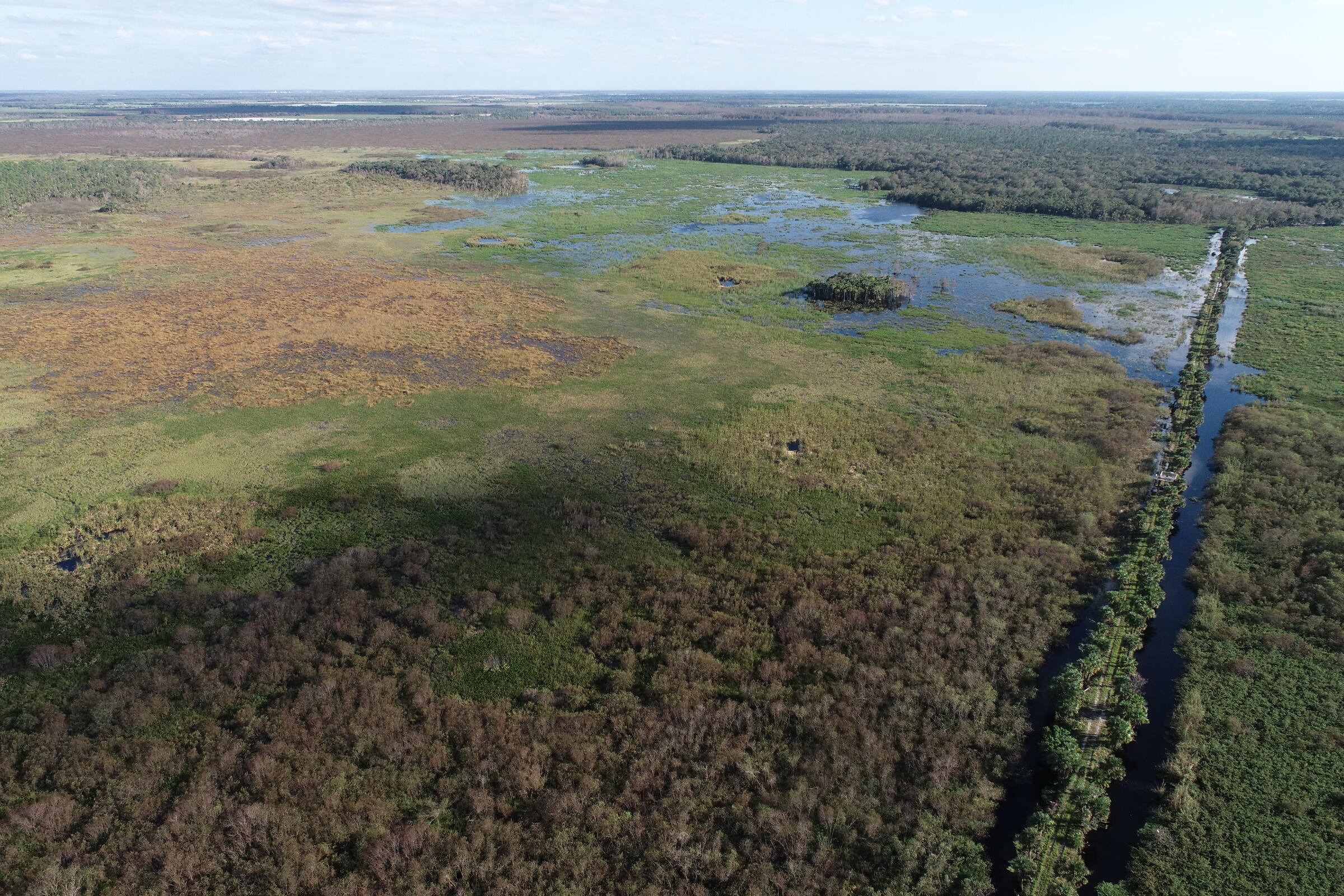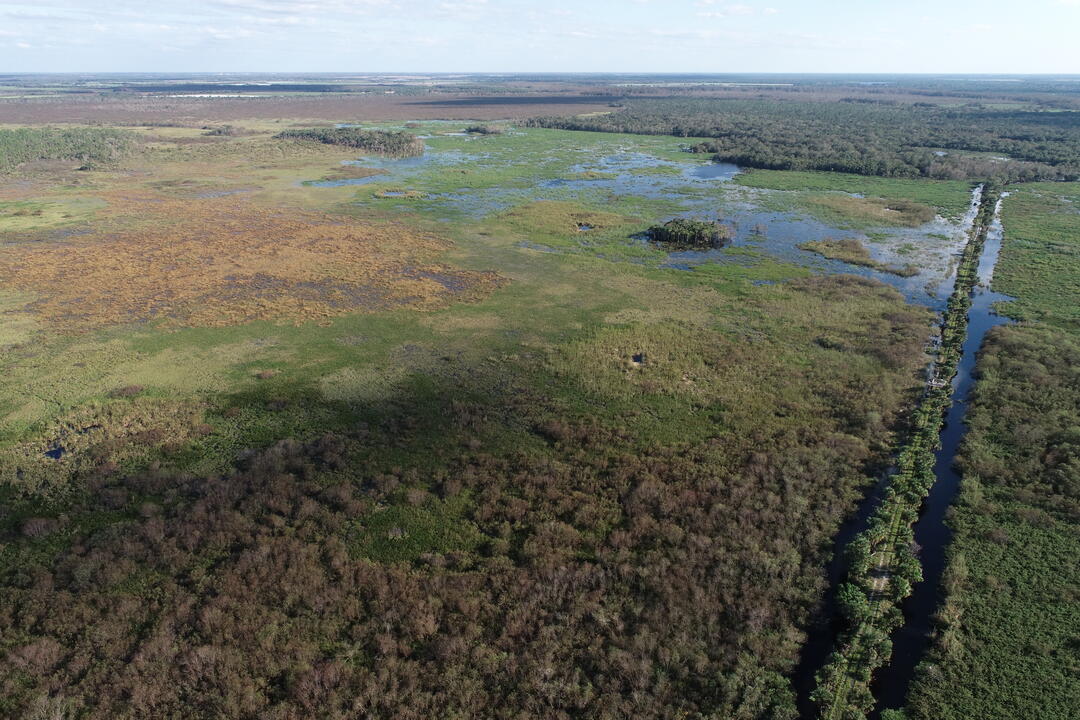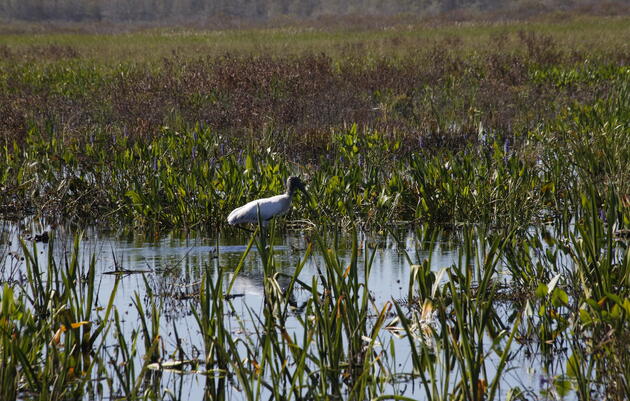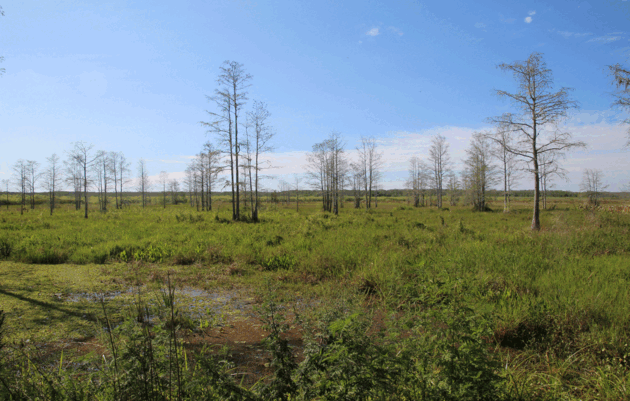Staff and contractors at Audubon’s Corkscrew Swamp Sanctuary have completed the first phase of restoration on more than 1,000 acres of wetland habitat since the initiative launched in 2018.
"Now, more than ever, protecting and preserving 13,450 acres within the Sanctuary is critical to the quality of life for both wildlife and surrounding communities,” says Marshall Olson, Director of Conservation and Interim Sanctuary Director. "As development continues to creep closer to Corkscrew Swamp Sanctuary, we need healthy wetlands to protect water quality, recharge aquifers, reduce the risk of catastrophic wildfire, and hold water during big rainfall events."
Launched in 2018, the project addresses the spread of nuisance, native woody shrubs in freshwater wetlands. These marshes and prairies, once dominated by diverse grasses and sedges, provided habitat for a range of wildlife species, from the tiny least killifish to the threatened Wood Stork. Now, Carolina willow and other woody shrubs are replacing those grasses, taking advantage of altered seasonal water conditions and a lack of fire.
Audubon’s restoration approach uses three steps: 1) Mechanically mulching the woody vegetation; 2) Treating non-native and other undesirable plants trying to reestablish amongst the native grasses and wetland vegetation; and 3) Reintroducing prescribed fire to manage and maintain these wetlands longterm.
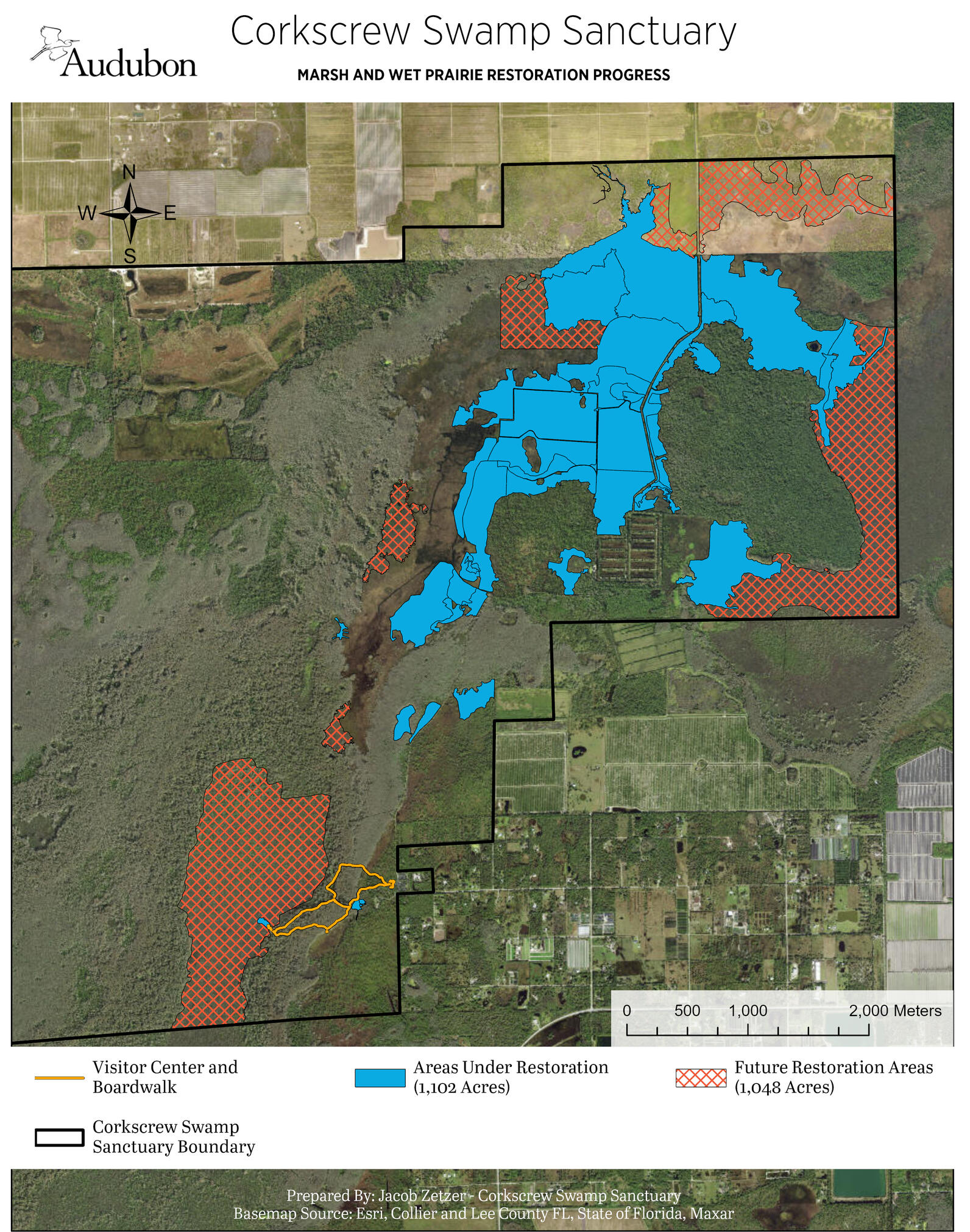
Contractors mulched 252 acres of woody shrubs this year, bringing the total mulched area to 1,103 acres. This accomplishment was made possible by investments from donors and corporate partners. Audubon has identified several hundred more acres of marsh and prairie habitats invaded by Carolina willow, much of which we are targeting for restoration. We will continue to prioritize fundraising for this effort and aim to mulch about 200 acres per year, which carries a cost of $3,500 per acre.
Audubon’s Corkscrew Swamp Sanctuary, a Ramsar Wetland of International Importance, has been an Audubon-protected site for more than 100 years. Science-driven land management protects these 13,450 acres, including the world’s largest remaining, old-growth bald cypress forest. An estimated 100,000 visitors annually explore the Sanctuary’s 2.25 miles of boardwalk through ancient forest and marsh habitat. Memberships and donations provide crucial support for conservation work at the Sanctuary.
Watch our short video!
Video celebrating our Marsh and Prairie Restoration milestone.

